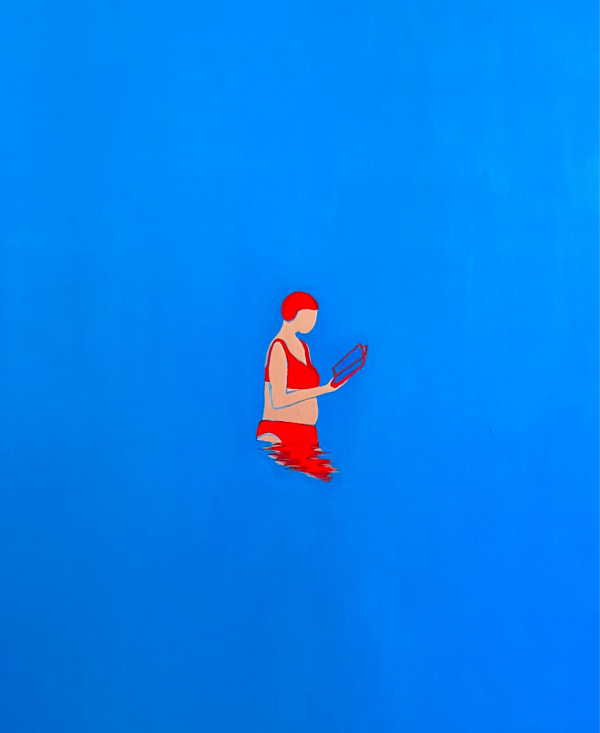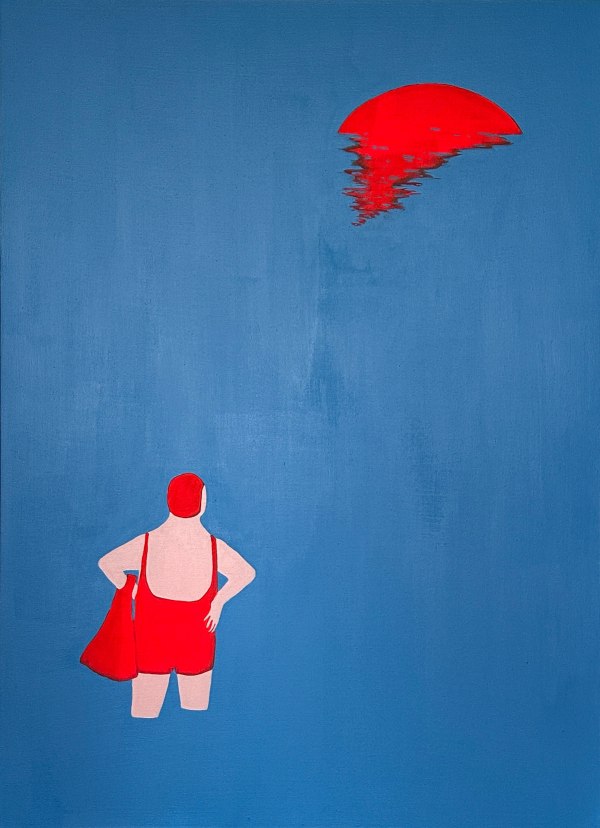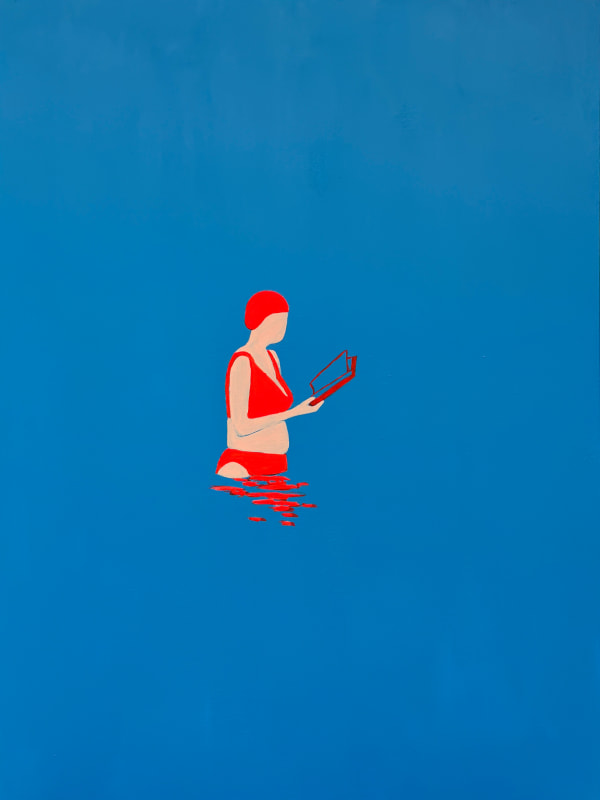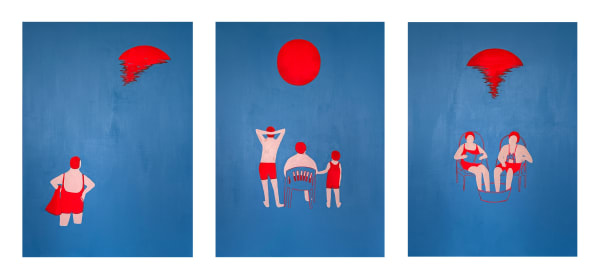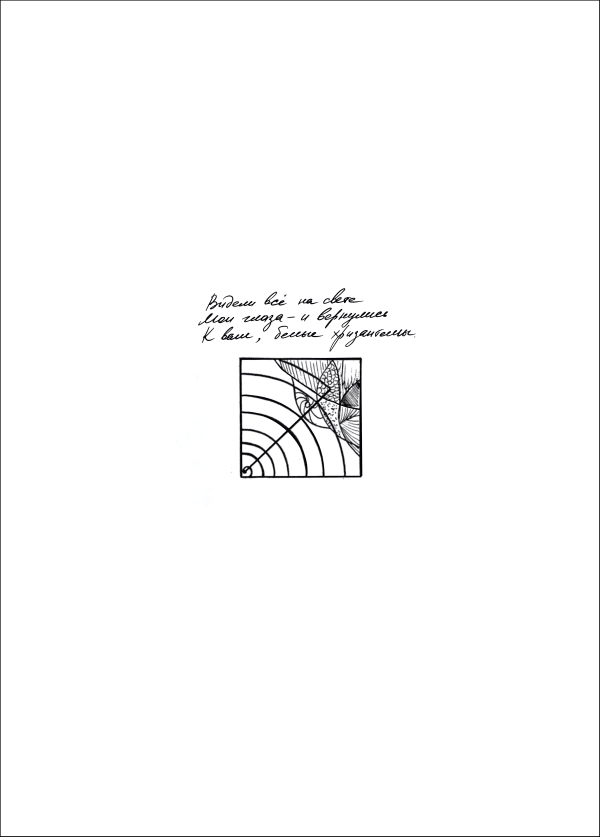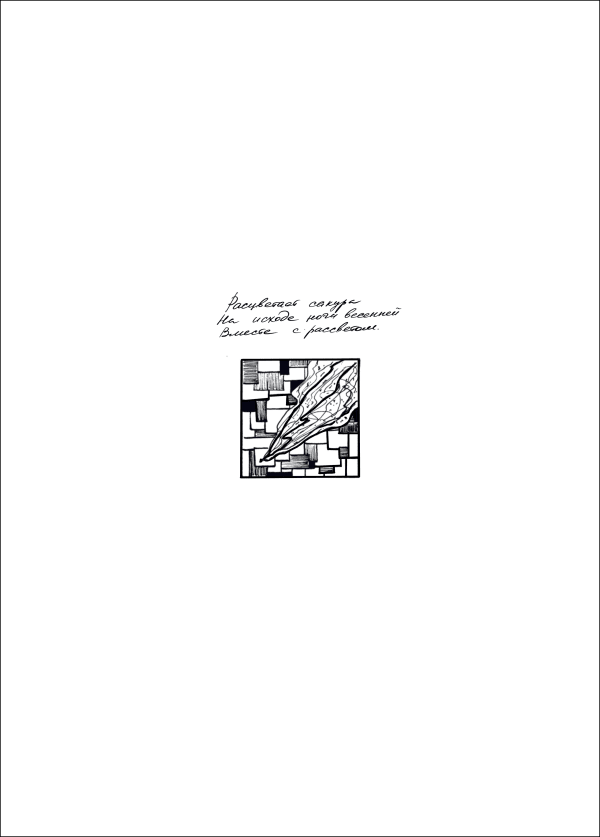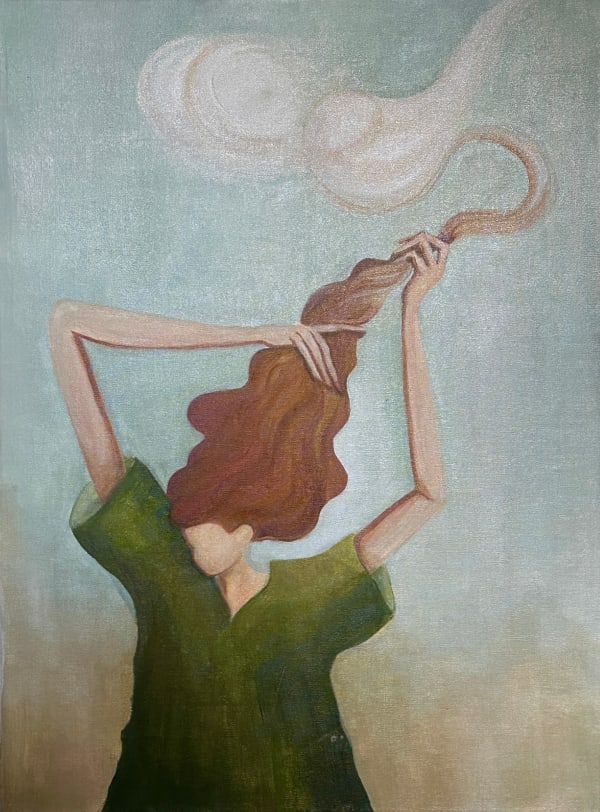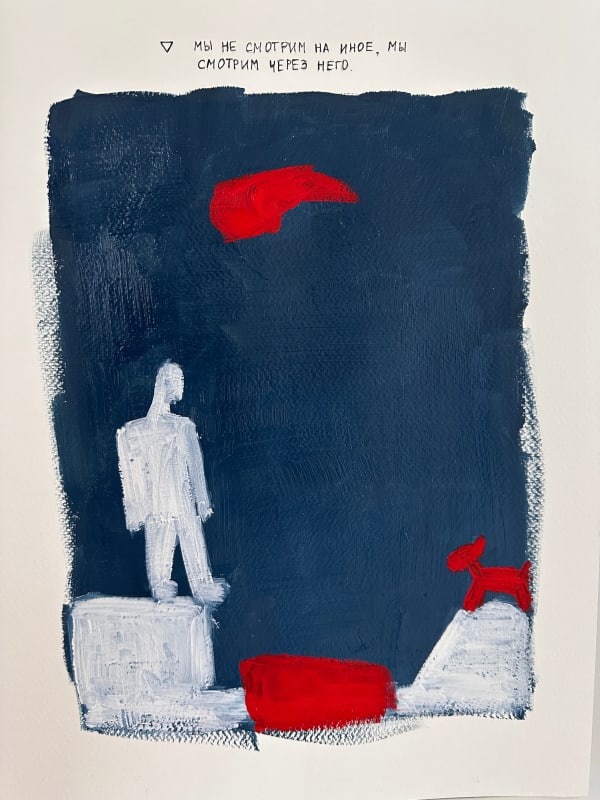“I create a situation of instability with which I reconstruct images by examining their parts under different optics”
A first medical degree inspired the artist to study human nature: what else is behind the physical form?
“Doing an autopsy in an anatomical museum or taking an anatomy class dissecting human entrails, I would hold them in my hands and think, is that it?” - Lia says. The experience of holding a person's organs in your hands and they are “empty,” all they contain are excerpts from anatomy books: the heart pumps blood, the brain is a collection of neural connections, etc.
The sense of doubt and instability motivates a reconsideration of different facets. Similar to Nietzsche's philosophy of life, where he rejects rational systematicity because the world is meaningless to him, and there is meaning only in aesthetics. After all, a true aesthetician does not contemplate, but sees and realizes the illusory nature of the illusory.
Lia is also “hooked” by Picasso's cubist works, in which she saw the idea of splitting objects into separate elements, and using different optics, she considers them from a different angle. According to the artist, Picasso works with breaking down concepts and perceptions, reinforcing meanings and expanding semantic variations.
“When different optics are used to look at the same object to perceive the world around it,” Lia reflects.
She is also interested in the ideas of posthumanism, where there is a request to reassemble the old foundations, when the white man believed in his exclusivity and looked at the world from a binary position. The world fluctuates, changes, becomes more complex, it is impossible to be certain. Leah constructs in her work an affective world where man is equal to nature, where man is constantly in doubt, experiencing uncomfortable feelings. L: “It is important to me that there is no perception of destruction, I rather strive for a blurring of established boundaries.”
The author's mediums include experimental works with plaster, video or photo art, but she does most of her work in the traditional medium of canvas and oil. It helps her to be in dialog with artists of the past.
Lia was born in 1991 in a small closed town, which is fenced with thorns on all sides. She graduated from medical university, wanted to become a pathologist, but at the age of 28 she decided to change her field of activity - she took up art and became an artist
Now she lives and works in Moscow.
-
 Lia AshirovaTHE INFINITY OF THE MOMENT (part 1) • БЕСКОНЕЧНОСТЬ МГНОВЕНИЯ (часть 1), 2024Canvas, acrylic
Lia AshirovaTHE INFINITY OF THE MOMENT (part 1) • БЕСКОНЕЧНОСТЬ МГНОВЕНИЯ (часть 1), 2024Canvas, acrylic
Холст, акрил110 x 90 cm
43 1/4 x 35 3/8 inSeries: Бесконечность мгновенияView more details -
 Lia AshirovaБЕСКОНЕЧНОСТЬ МГНОВЕНИЯ (часть 5) , 2025Холст, акрил110 x 80 cm
Lia AshirovaБЕСКОНЕЧНОСТЬ МГНОВЕНИЯ (часть 5) , 2025Холст, акрил110 x 80 cm
Series: Бесконечность мгновенияView more details -
 Lia AshirovaTHE INFINITY OF THE MOMENT (part 7) • БЕСКОНЕЧНОСТЬ МГНОВЕНИЯ (часть 7), 2025Canvas, acrylic
Lia AshirovaTHE INFINITY OF THE MOMENT (part 7) • БЕСКОНЕЧНОСТЬ МГНОВЕНИЯ (часть 7), 2025Canvas, acrylic
Холст, акрил110 x 80 cm
43 1/4 x 31 1/2 inSeries: Бесконечность мгновенияView more details -
 Lia AshirovaБЕСКОНЕЧНОСТЬ МГНОВЕНИЯ (часть 9), 2025Холст, акрил120 x 88 cmSeries: Бесконечность мгновенияView more details
Lia AshirovaБЕСКОНЕЧНОСТЬ МГНОВЕНИЯ (часть 9), 2025Холст, акрил120 x 88 cmSeries: Бесконечность мгновенияView more details -
 Lia AshirovaБЕСКОНЕЧНОСТЬ МГНОВЕНИЯ (часть 10), 2025Холст, акрил120 x 100 cmSeries: Бесконечность мгновенияView more details
Lia AshirovaБЕСКОНЕЧНОСТЬ МГНОВЕНИЯ (часть 10), 2025Холст, акрил120 x 100 cmSeries: Бесконечность мгновенияView more details -
 Lia AshirovaБЕСКОНЕЧНОСТЬ МГНОВЕНИЯ (часть 11), 2025Холст, акрил120 x 88 cmSeries: Бесконечность мгновенияView more details
Lia AshirovaБЕСКОНЕЧНОСТЬ МГНОВЕНИЯ (часть 11), 2025Холст, акрил120 x 88 cmSeries: Бесконечность мгновенияView more details -

-
 Lia AshirovaВСЕ, КРОМЕ ОДНОЙ, МОЛЧАТ, 2025Canvas, acrylic
Lia AshirovaВСЕ, КРОМЕ ОДНОЙ, МОЛЧАТ, 2025Canvas, acrylic
Холст, акрил110 x 80 cm
43 1/4 x 31 1/2 inSeries: На деревнеView more details -

-
 Lia AshirovaTHE INFINITY OF THE MOMENT (triptych), 2025Canvas, acrylic110 x 80 cm (each one)Series: Бесконечность мгновенияView more details
Lia AshirovaTHE INFINITY OF THE MOMENT (triptych), 2025Canvas, acrylic110 x 80 cm (each one)Series: Бесконечность мгновенияView more details -
 Lia AshirovaХАЙКУ 11, 2021Paper, liner
Lia AshirovaХАЙКУ 11, 2021Paper, liner
Бумага, линер42 x 29 cm
16 1/2 x 11 3/8 inSeries: ХайкуView more details -
 Lia AshirovaХАЙКУ 12, 2021Paper, liner
Lia AshirovaХАЙКУ 12, 2021Paper, liner
Бумага, линер42 x 29 cm
16 1/2 x 11 3/8 inSeries: ХайкуView more details -
 Lia AshirovaХАЙКУ 13, 2021Paper, liner
Lia AshirovaХАЙКУ 13, 2021Paper, liner
Бумага, линер42 x 29 cm
16 1/2 x 11 3/8 inSeries: ХайкуView more details -
 Lia AshirovaХАЙКУ 14, 2021Paper, liner
Lia AshirovaХАЙКУ 14, 2021Paper, liner
Бумага, линер42 x 29 cm
16 1/2 x 11 3/8 inSeries: ХайкуView more details -
 Lia AshirovaХАЙКУ 15, 2021Paper, liner
Lia AshirovaХАЙКУ 15, 2021Paper, liner
Бумага, линер42 x 29 cm
16 1/2 x 11 3/8 inSeries: ХайкуView more details -
 Lia AshirovaХАЙКУ 16, 2021Paper, liner
Lia AshirovaХАЙКУ 16, 2021Paper, liner
Бумага, линер42 x 29 cm
16 1/2 x 11 3/8 inSeries: ХайкуView more details -
 Lia AshirovaХАЙКУ 18, 2025Paper, liner
Lia AshirovaХАЙКУ 18, 2025Paper, liner
Бумага, линер42 x 29 cm
16 1/2 x 11 3/8 inSeries: ХайкуView more details -
 Lia AshirovaХАЙКУ 17, 2025Paper, liner
Lia AshirovaХАЙКУ 17, 2025Paper, liner
Бумага, линер42 x 29 cm
16 1/2 x 11 3/8 inSeries: ХайкуView more details -
 Lia AshirovaХАЙКУ 19, 2025Paper, liner
Lia AshirovaХАЙКУ 19, 2025Paper, liner
Бумага, линер42 x 29 cm
16 1/2 x 11 3/8 inSeries: ХайкуView more details -
 Lia AshirovaХАЙКУ 20, 2025Paper, liner
Lia AshirovaХАЙКУ 20, 2025Paper, liner
Бумага, линер42 x 29 cm
16 1/2 x 11 3/8 inSeries: ХайкуView more details -
 Lia AshirovaХАЙКУ 21, 2025Paper, liner
Lia AshirovaХАЙКУ 21, 2025Paper, liner
Бумага, линер42 x 29 cm
16 1/2 x 11 3/8 inSeries: ХайкуView more details -
 Lia AshirovaINSTABILITY • НЕСТАБИЛЬНОСТЬ , 2022Canvas, oil
Lia AshirovaINSTABILITY • НЕСТАБИЛЬНОСТЬ , 2022Canvas, oil
Холст, масло40 x 30 cm
15 3/4 x 11 3/4 inSeries: НестабильностьView more details -

-

-


